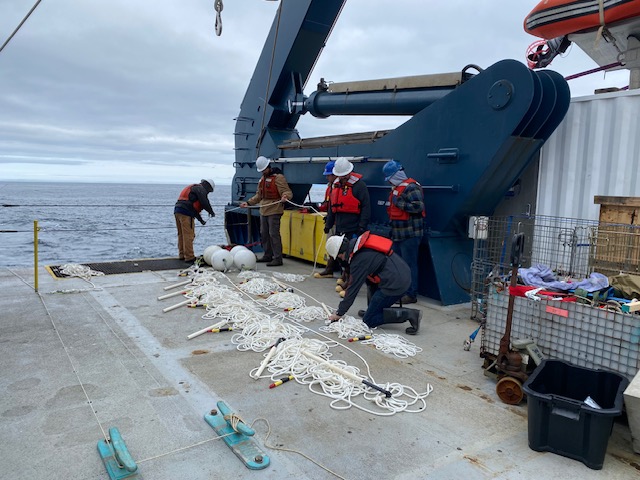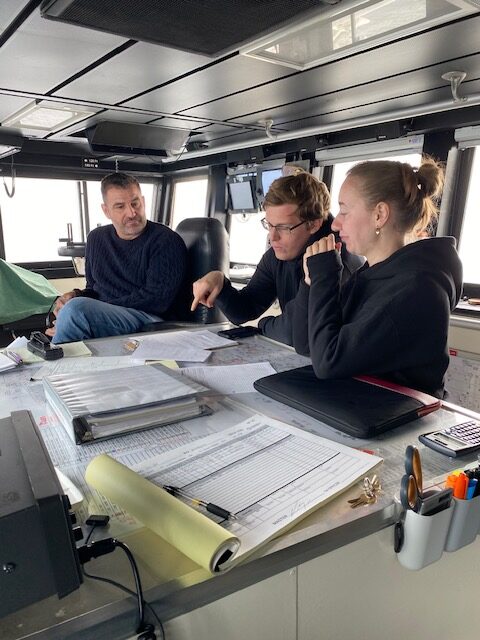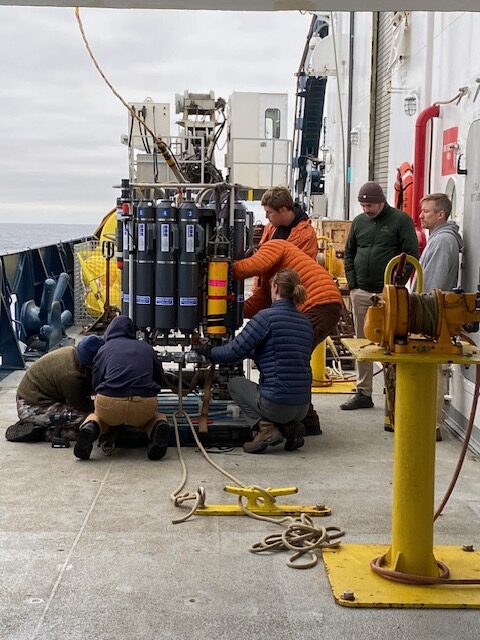New Dataset based on HYCOM forecast system enhances Internal Tide corrections for SWOT Cal/Val The internal-wave resolving (IWR) modeling team have released a valuable new dataset providing sea surface height (SSH) corrections for internal tides derived from the HYbrid Coordinate Ocean Model (HYCOM), specifically tailored for the Surface Water and Ocean Topography (SWOT) mission’s Calibration and Validation (Cal/Val) phase. This resource, which accounts for both phase-locked and non-phase-locked internal tide components, promises to refine the accuracy of satellite altimetry data and advance our understanding of ocean dynamics. Internal tides—subsurface waves … Read More
OSM 2026 is on the horizon!
We have many planned presentations about our various NGIW projects at the upcoming Ocean Sciences Meeting in February 2026. We are all excited to discuss our results in Glasgow! Here is a listing of the various abstracts that have been submitted by our group members: Session code Abstract title Authors D0001 Observation Vertical Resolution Relation to Ocean Analysis Gregg Jacobs, Charlie Barron, Matt Carrier, Joseph D’Addeaio, Bob Helber, Vivian Montiforte, Hans Ngodock, John Osborne, Clark Rowley, Bailey Rester, Max Yaremchuk PS004 Enhancing the Realism of Ocean Tides in Global Ocean … Read More
Aleutian slope Long Line is in and all SQUIDs deployed!
With it’s light and long design using a combination of tilt current meters and temperature sensors, the UDelaware NGIW long line mooring is readied on the back deck of the R/V Atlantis (photo by Magdalena Andres) The long line moored array has been deployed off the Aleutian slope! It went really well this morning and here are a few shots of the UDel / WHOI team prepping to deploy their long line on the Atlantis. With all the moored assets deployed, and the SQUID floats deployed, we’re doing CTD, ADCP … Read More
IWR Array is in with the Long Line and SQUID floats on their way!
(from right to left) SIO graduate students Caeli Griffin and Grant Meiners Chief-Scientists-in-the-making with R/V Atlantis Captain Derek discussing their night ops. (photo Magdalena Andres) The IWR Array deployment is complete (with 8 CPIESs and the central full-water-column mooring in about 5300 m water depth)! It will be measuring the tidal beam that emanates from the Aleutian Islands for the next ~12 months, until we recover the array. We’re in the middle of the 5th of 6 REMUS dives and we’ve deployed two of the three SQUID floats (EM APEX). After the AUV dive, we’ll … Read More
Atlantis updates and it’s mooring deployment day off the Aleutians!
WHOI’s Jess K. readying a CPIES for deployment. (photo by Magdalena Andres) Things are going well out here. The WHOI CPIESs team (Jessica K., Will H. and Magdalena A.) and Drew C. have deployed 5 of the 9 CPIESs. CPIES deployments are little different on Atlantis than on most ships, but it works really well to throw the float over the starboard quarter and then lift the CPIES over the side with the crane (that has worked better for us than doing it midship, where the swirling flow tends … Read More
NOPP GIW heads north!
Atlantis science party members (including SIO MOD team Caeli Griffin, Helen Dufel and Grant Meiners) taking water samples for the calibration cast. (photo by Magdalena Andres) Greetings from the R/V Atlantis! NOPP-GIW is heading for the north Pacific! The SIO/WHOI IWR array and the WHOI/UDel long line array will both be deployed off the continental shelf and slope in a massive internal tide beam emanating of the Aleutian Island chain. While this is happening, SQUID floats will be launched in coordination with the UW-APL team for a large coordinated NOPP-GIW … Read More
IWR array mooring and CPIESs successfully recovered
In October 2024, the internal-wave resolving (IWR) array mooring team set out on another voyage to recover field instruments, including a high vertical-resolution mooring system and bottom mounted, current-and-pressure-equipped inverted echo sounders (CPIESs), as part of the NOPP-GIW program to better predict internal waves in the ocean. Manifested as density disturbances in the ocean interior, these internal waves are generated by surface wind and tidal flows interacting with bottom ridges. Their generation, propagation and dissipation have critical implications for coastal dynamics and water-mass mixing in the Earth’s climate system. The … Read More
- Page 1 of 2
- 1
- 2






